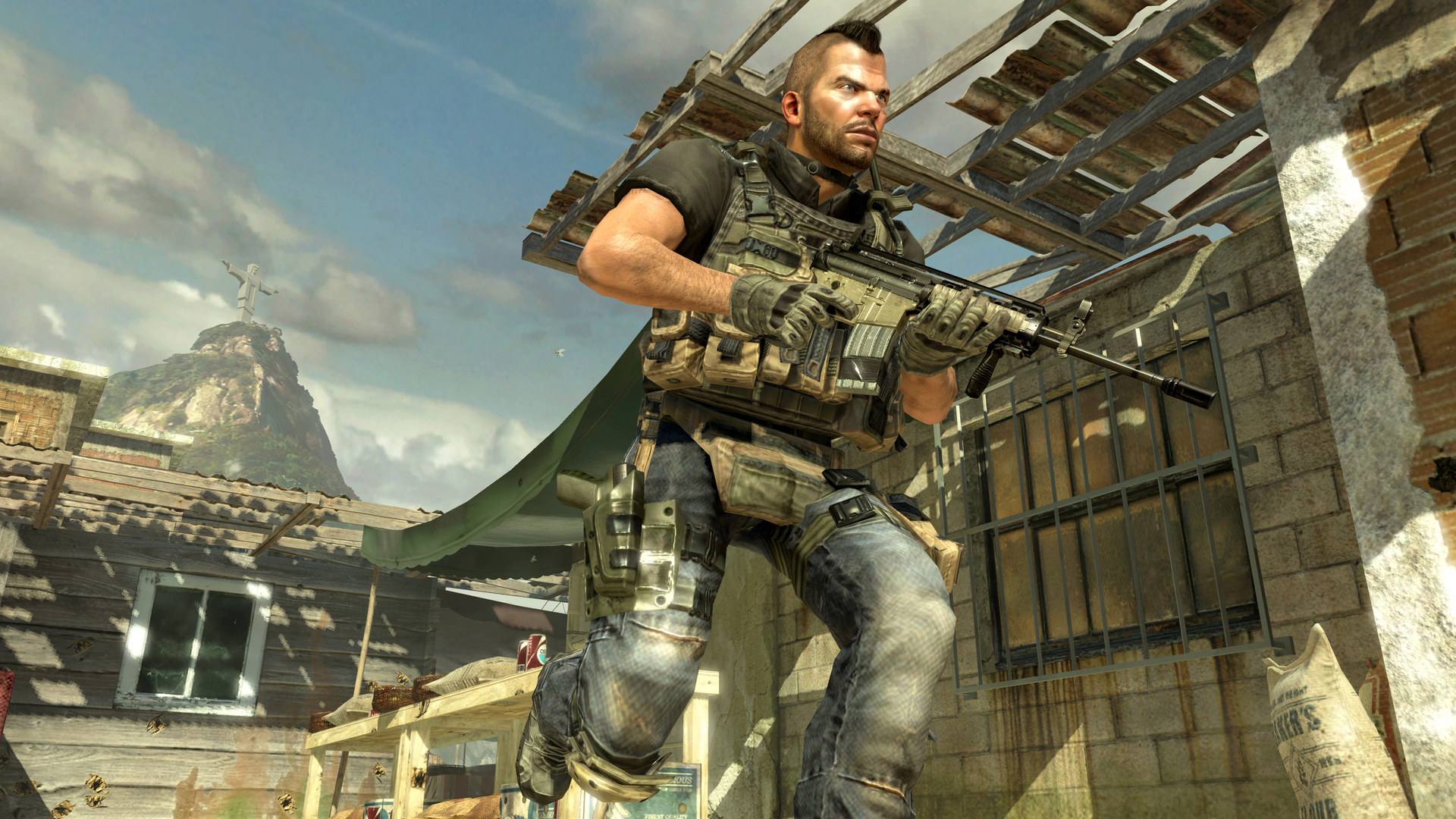Want to know why your next Call of Duty game costs $70?
It’s not just inflation, my friend.
Developing a game like Call of Duty is like building a small city – it takes a massive amount of resources, manpower, and time. We’re talking hundreds of developers, artists, designers, marketers, and more, all working for years to bring you those explosions, those killstreaks, and that sweet, sweet feeling of victory (or crushing defeat).
In this article, we’re diving deep into the Call of Duty development costs. We’ll break down where the money goes, why these games are so expensive to make, and what it means for the future of gaming. Buckle up, soldier, it’s about to get pricey.
The Staggering Numbers Behind Call of Duty Development Costs
Think a few million bucks can get you a Call of Duty game? Think again.
Recent reports revealed that Call of Duty development costs have skyrocketed. We’re talking:
- Black Ops 3 (2015): Over $450 million
- Modern Warfare (2019): Over $640 million
- Black Ops Cold War (2020): Over $700 million!
That’s right, $700 million. That’s more than some Hollywood blockbusters! And these figures only account for development costs, not marketing and distribution, which can add hundreds of millions more.
So, where does all that money go?
Where Does the Money Go?
Developing a AAA game like Call of Duty is like running a small country. You’ve got a massive payroll to cover, technology to invest in, and a whole lot of marketing to do. Here’s a breakdown of the key factors driving up Call of Duty development costs:
- Manpower: Hundreds of developers, artists, designers, sound engineers, and more work for years to create these games. Salaries, benefits, and overhead add up quickly.
- Technology: Cutting-edge game engines, motion capture studios, and high-powered hardware are essential for creating realistic graphics and immersive gameplay.
- Marketing and Distribution: Getting the word out about a new Call of Duty release requires a massive marketing campaign, including TV commercials, online ads, and partnerships with influencers.
- Licensing and Royalties: Call of Duty often features licensed music, weapons, and other content, which adds to the overall cost.
- Ongoing Support and Updates: Post-launch support, bug fixes, and new content updates require dedicated teams and resources.
Think of it like this:
Imagine you’re building a high-performance race car. You need the best engineers, the most advanced materials, and a top-notch pit crew. That’s what it takes to create a Call of Duty game – except instead of a race car, you’re building a virtual world filled with guns, explosions, and intense multiplayer action.
The Impact of Rising Development Costs
These skyrocketing Call of Duty development costs have a ripple effect throughout the gaming industry:
- Higher Game Prices: As development costs rise, publishers may need to increase game prices to maintain profitability.
- Focus on Established Franchises: Publishers may be less willing to take risks on new IPs, focusing instead on established franchises like Call of Duty that are more likely to generate a return on investment.
- Microtransactions and DLC: To offset development costs, publishers may rely more heavily on microtransactions and downloadable content (DLC).
- Increased Pressure on Developers: The high stakes involved in AAA game development can lead to crunch time and burnout among developers.
But here’s the thing:
Gamers demand bigger, better, and more immersive experiences. And that comes at a cost.
The Future of Call of Duty Development
So, what does the future hold for Call of Duty development costs?
It’s unlikely that costs will go down anytime soon. As technology advances and player expectations rise, the cost of developing these games will likely continue to increase.
However, there are a few potential trends that could impact the future:
- Cloud Gaming: Cloud gaming services like Google Stadia and Xbox Cloud Gaming could potentially reduce development costs by shifting some of the processing power to remote servers.
- Subscription Services: Subscription services like Xbox Game Pass could provide a more stable revenue stream for publishers, potentially reducing the pressure to recoup development costs through high game prices or microtransactions.
- New Monetization Models: Publishers may explore new monetization models, such as free-to-play games with optional cosmetic items or battle passes.
The bottom line:
Call of Duty is here to stay. But the way these games are developed and monetized may need to evolve to keep pace with rising costs and changing player expectations.
Optimizing Your Call of Duty Experience: Tips and Tricks
Alright, soldier, now that you understand the insane Call of Duty development costs, let’s talk about how to get the most bang for your buck.
Whether you’re a seasoned veteran or a fresh recruit, these tips and tricks will help you dominate the battlefield and maximize your enjoyment.
Mastering the Fundamentals
Before you jump into the chaos of online multiplayer, it’s crucial to master the fundamentals:
- Movement: Learn how to move effectively, using cover and flanking maneuvers to your advantage.
- Aim: Practice your aim regularly, focusing on accuracy and recoil control.
- Map Knowledge: Familiarize yourself with the maps, learning the key chokepoints and power positions.
- Weapon Selection: Experiment with different weapons and find the loadout that best suits your playstyle.
Pro Tip: Spend time in the practice range or against bots to hone your skills before facing real players.
Communication is Key
In team-based game modes, communication is crucial. Use your microphone or in-game chat to coordinate with your teammates:
- Callouts: Provide clear and concise callouts, informing your team about enemy locations and movements.
- Strategy: Discuss strategies and tactics with your team to ensure everyone is on the same page.
- Support: Offer support to your teammates, whether it’s reviving them, providing covering fire, or sharing ammo.
Remember: A well-coordinated team is more effective than a group of individuals playing solo.
Advanced Tactics
Once you’ve mastered the basics, it’s time to step up your game with some advanced tactics:
- Positioning: Anticipate enemy movements and position yourself accordingly.
- Awareness: Pay attention to your surroundings, using your minimap and sound cues to detect enemy presence.
- Timing: Use timing to your advantage, pushing forward when the enemy is vulnerable or retreating when outnumbered.
- Adaptation: Adapt your playstyle to the situation, switching tactics as needed.
Pro Tip: Watch professional Call of Duty players and learn from their strategies and techniques.
Essential Tools and Resources
To further enhance your Call of Duty experience, consider these tools and resources:
- Gaming Headset: A good gaming headset provides clear audio and allows for effective communication with your team.
- Controller Customization: Consider customizing your controller with paddles or other attachments to improve your gameplay.
- Online Communities: Join online communities and forums to connect with other players, share tips, and learn new strategies.
- Training Apps: There are various training apps and websites available that can help you improve your aim, reaction time, and other skills.
Remember: Continuous improvement is key to success in Call of Duty.
By mastering the fundamentals, communicating effectively, and utilizing advanced tactics, you can elevate your gameplay and truly appreciate the incredible work that goes into developing these games.
The Business of Call of Duty: A Billion-Dollar Franchise
Call of Duty isn’t just a game; it’s a global phenomenon.
With millions of players worldwide and billions of dollars in revenue, it’s one of the most successful entertainment franchises in history.
But how did it get there?
And what are the key factors driving its continued success?
In this section, we’ll explore the business side of Call of Duty, examining its marketing strategies, revenue models, and impact on the gaming industry.
Marketing Mastery: Reaching the Masses
Activision, the publisher of Call of Duty, is a master of marketing. They know how to generate hype and reach a massive audience. Here are some of their key strategies:
- Cinematic Trailers: Call of Duty trailers are known for their high production values and Hollywood-style action sequences. They’re designed to grab your attention and get you pumped for the next release.
- Celebrity Endorsements: Activision often partners with celebrities and influencers to promote Call of Duty, leveraging their star power to reach a wider audience.
- Esports and Competitive Gaming: Call of Duty has a thriving esports scene, with professional players and teams competing for millions of dollars in prize money. This not only generates excitement but also showcases the game’s competitive depth.
- Social Media Engagement: Activision maintains a strong social media presence, engaging with fans and building anticipation for upcoming releases.
Think of it like this:
Imagine you’re launching a new product. You need to create a buzz, get people talking, and convince them that your product is worth their time and money.
That’s what Activision does with Call of Duty, using a multi-faceted marketing approach to reach millions of potential players.
Revenue Models: Beyond the Box Price
While the initial game purchase is a significant source of revenue, Call of Duty also generates income through various other channels:
- Microtransactions: Players can purchase in-game items such as weapon skins, operator outfits, and experience boosts.
- Downloadable Content (DLC): Activision releases regular DLC packs that include new maps, weapons, and game modes.
- Season Passes: Players can purchase season passes that grant access to all DLC content for a particular game.
- Merchandise: Call of Duty merchandise, such as t-shirts, hats, and figurines, is also a source of revenue.
The key takeaway:
Call of Duty has diversified its revenue streams, ensuring a steady flow of income even after the initial game launch.
Impact on the Gaming Industry
Call of Duty has had a profound impact on the gaming industry, influencing game design, marketing strategies, and the rise of esports.
- The Rise of the First-Person Shooter: Call of Duty helped popularize the first-person shooter genre, inspiring countless other games.
- The Power of Franchises: Call of Duty demonstrated the potential of building a successful franchise, with annual releases and a dedicated fanbase.
- The Growth of Esports: Call of Duty’s competitive scene has contributed to the growth of esports, attracting millions of viewers and sponsors.
The bottom line:
Call of Duty is a juggernaut in the gaming industry, shaping trends and inspiring innovation.
In Conclusion
Developing a game like Call of Duty is a massive undertaking, requiring significant financial investment and a talented team of developers.
But the result is a thrilling and immersive gaming experience that continues to captivate millions of players worldwide.
By understanding the Call of Duty development costs and the business strategies behind the franchise, you can gain a deeper appreciation for the complexity and scale of this global phenomenon.
Related


Leave a Reply